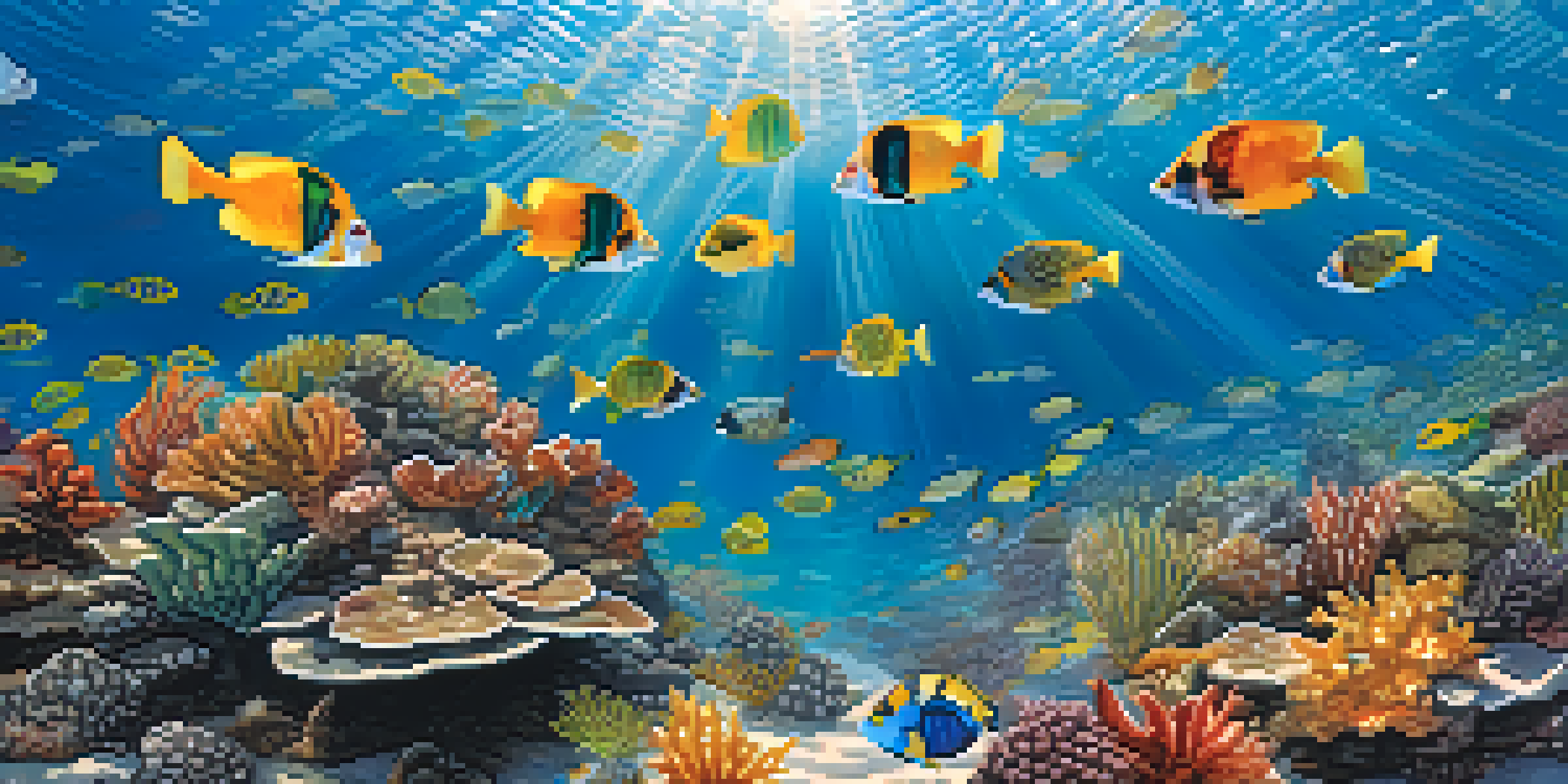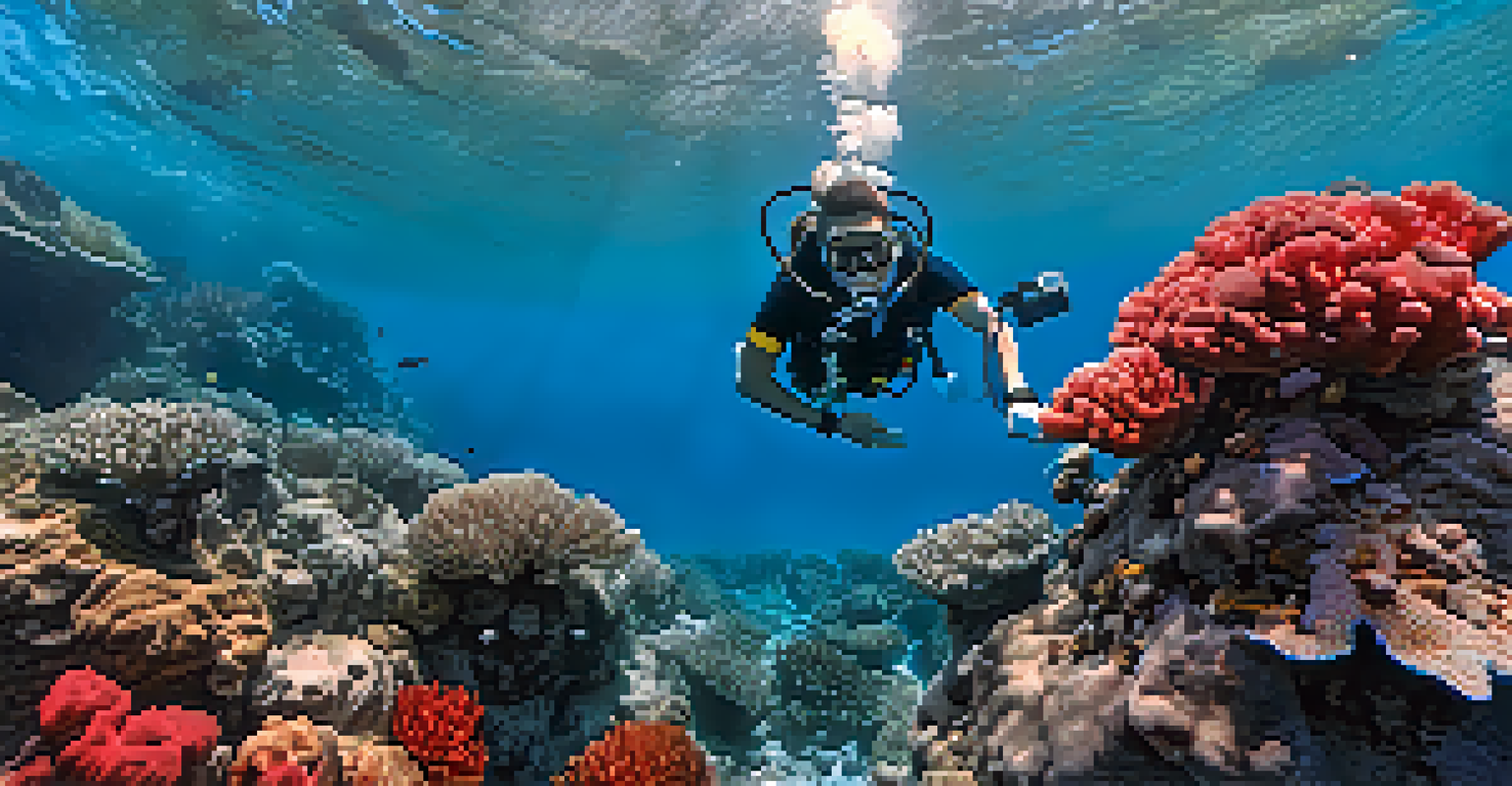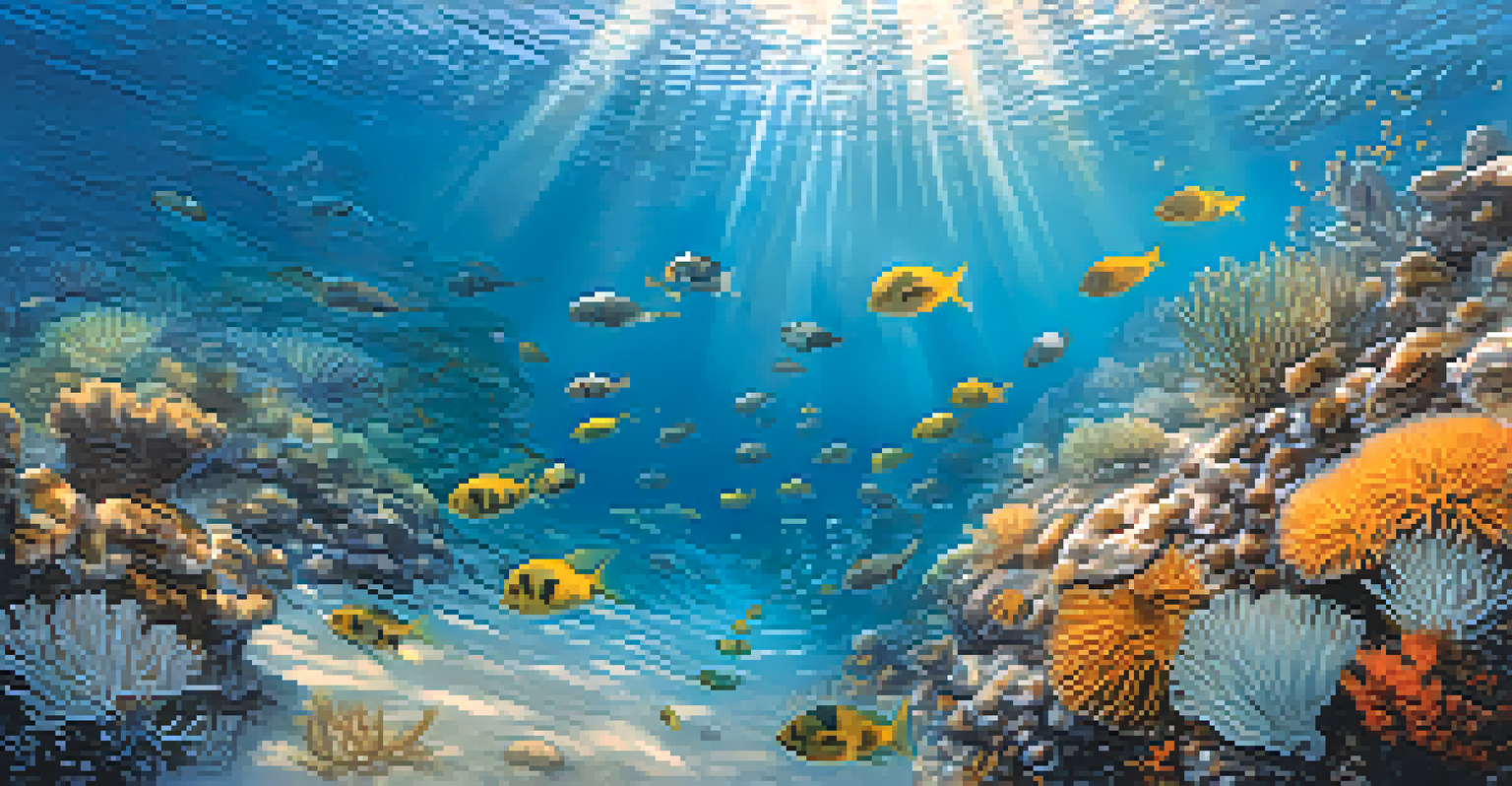Underwater Photography Tips for Your Brazil Adventure

Choose the Right Equipment for Underwater Shots
When diving into underwater photography, selecting the right gear is key. A good camera housing is essential to protect your equipment from water damage. Additionally, consider using a wide-angle lens to capture expansive underwater scenes, as Brazil's marine life is often best showcased in broad views.
The camera is an instrument that teaches people how to see without a camera.
Don't forget about lighting! Underwater environments can be dim, so a good external flash or strobe can help illuminate your subjects. If you're using a smartphone, investing in a waterproof case with a lens filter can also enhance your photos significantly.
Lastly, practice using your equipment before your trip. Familiarity with your camera settings, focus, and underwater techniques will make a world of difference when you're submerged in Brazil's stunning waters.
Understanding Light and Color Underwater
Light behaves differently underwater, which is crucial to understand for great photography. As you descend, colors begin to fade, with reds disappearing first. To combat this, it's best to shoot in shallow waters where the sunlight can still reach your subjects.

You might also want to experiment with white balance settings on your camera. Adjusting these settings can bring back the vibrant colors that the water tends to mute. This can drastically improve the quality of your photos, making them more colorful and lifelike.
Choose Proper Gear for Success
Selecting the right camera housing, lenses, and lighting is crucial for capturing stunning underwater photos.
Using filters can also help restore color to your images. Red filters, in particular, are great for deeper shots, allowing you to capture the rich hues of Brazil's underwater landscapes.
Mastering Composition for Stunning Shots
Composition is a vital part of any photography, and underwater shots are no exception. Remember the rule of thirds: try to position your subject off-center to create a more dynamic photograph. This technique draws the viewer's eye and adds interest to your images.
Photography is the story I fail to put into words.
Also, don't be afraid to experiment with angles. Shooting from above can give a unique perspective of schools of fish, while getting closer to your subject can help highlight intricate details of coral or marine life. The more varied your angles, the more engaging your photo collection will be.
Lastly, try to include elements of the environment in your shots. Incorporating the underwater landscape can tell a more compelling story and enhance the overall beauty of your images.
Getting Comfortable Underwater for Better Photos
Before you start snapping pictures, it’s essential to feel at ease in the water. If you're anxious, it will show in your photos. Take time to practice your buoyancy and movement, allowing you to glide smoothly without disturbing the marine life around you.
Try to remain calm and steady while you shoot. Quick movements can create bubbles that might scare off your subjects or blur your images. By mastering your buoyancy, you'll be able to hover in place and focus on capturing that perfect shot.
Understand Underwater Light Effects
Grasping how light and color change underwater helps enhance your photography, especially with techniques like adjusting white balance and using filters.
Consider breathing techniques too; slow, deep breaths can help you maintain control and keep you relaxed underwater. The more comfortable you are, the better your photographs will turn out.
Respecting Marine Life and the Environment
As you embark on your underwater photography adventure in Brazil, it’s important to remember to respect marine life. Avoid touching or disturbing coral reefs and other organisms, as they are fragile ecosystems that take years to recover from damage.
Keep a safe distance from marine animals, allowing them to behave naturally. This not only helps maintain their habitat but also often results in more genuine and captivating photographs. A shy fish might reveal itself when it feels safe and undisturbed.
Educating yourself about the local marine species can also enhance your experience. Knowing their behaviors and habitats can help you anticipate great photo opportunities and contribute to conservation efforts.
Utilizing Post-Processing Techniques
Once you've captured your underwater shots, post-processing can elevate your images to the next level. Software like Adobe Lightroom or Photoshop allows you to adjust colors, contrast, and sharpness, bringing your photos to life.
Don't go overboard with edits, though. Aim for a natural look that showcases the beauty of the underwater world. Simple adjustments, like enhancing brightness or sharpening details, can make a significant difference.
Respect Marine Life and Environment
Maintaining a safe distance from marine creatures and avoiding disruption to their habitats is essential for ethical underwater photography.
Also, consider cropping your images to improve composition after the fact. This flexibility can help you highlight the most captivating elements of your underwater adventures.
Planning Your Underwater Photography Locations in Brazil
Brazil offers a wealth of stunning underwater locations, so planning is crucial. Researching spots like Fernando de Noronha, known for its crystal-clear waters and abundant marine life, can help you maximize your photography experience.
Another fantastic location is the Abrolhos Marine National Park, where you can capture vibrant coral reefs and diverse species. Each destination has its own unique charm, so choose based on the types of shots you want to capture.

Consider the time of year you’re visiting, too. Certain months may offer better visibility and more active marine life, which can significantly enhance your photography opportunities.